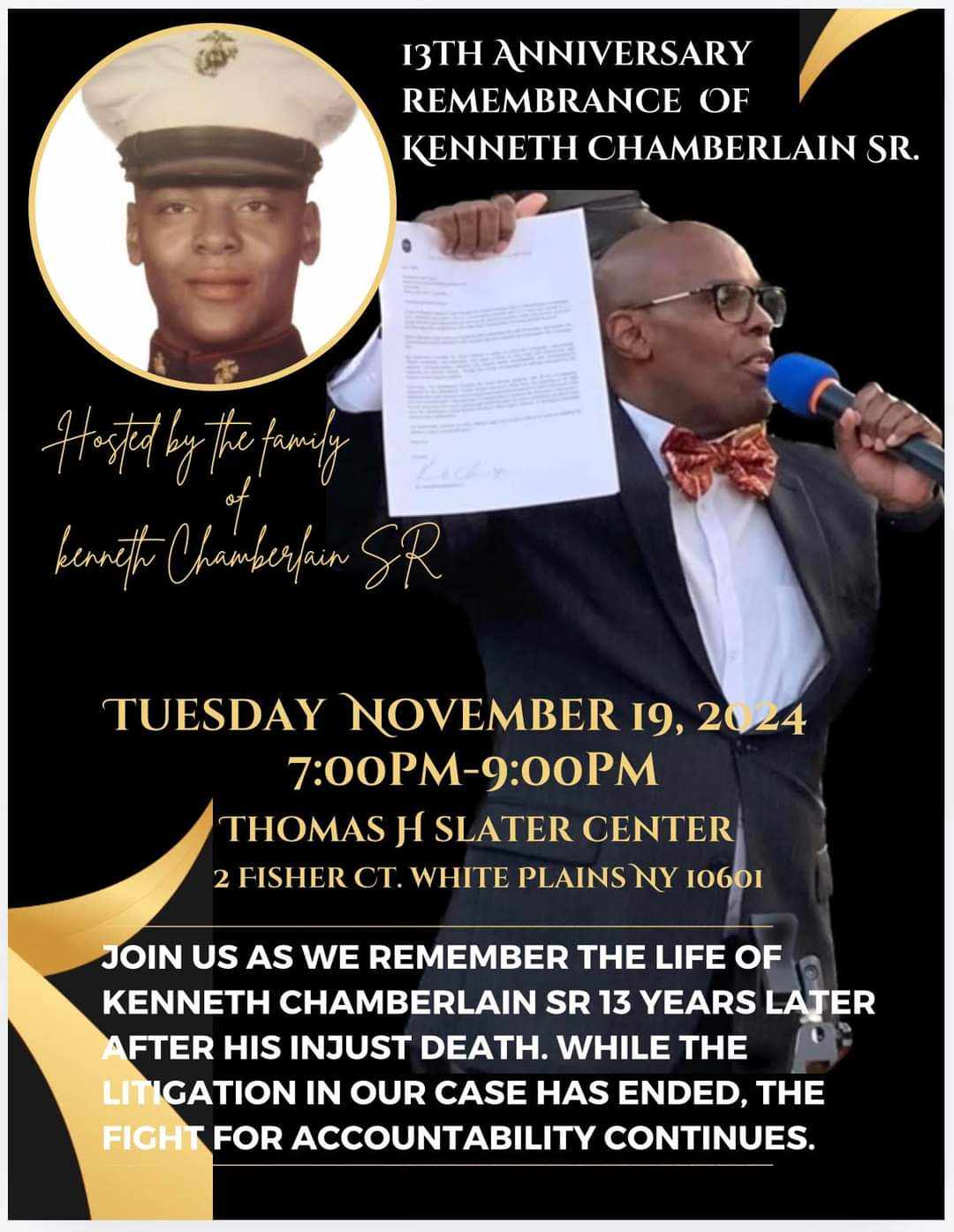The recent report from the New York State Attorney General Tish James (see below), Office of Special Investigation (OSI) sheds critical light on the fatal shooting of Mr. Garris by Detective Conn.
According to the OSI’s findings, the circumstances leading to Mr. Garris’s death raise significant concerns about the proportionality of the force used. The report details that, despite claims from Detective Conn that Mr. Garris was attempting to seize Officer Bird’s firearm, other evidence, including Officer Bird’s testimony, contradicts this narrative.
The OSI’s investigation highlights that less lethal alternatives were available, and the threat level perceived by Detective Conn did not warrant the use of deadly force. These findings prompt a necessary reexamination of how and when police officers are justified in using lethal measures, mainly when dealing with individuals who may be in vulnerable states.
Report on the Investigation into the Death of Jarrel Garris by BLACK WESTCHESTER MAGAZINE on Scribd
First, let’s consider the testimony of Officer Bird, who was directly involved in the struggle with Mr. Garris. Officer Bird clarified that Mr. Garris did not attempt to grab her firearm. Yes, her holster’s hood was down, but this doesn’t imply that her weapon was ever in imminent danger of being taken. She explained that her holster required multiple deliberate actions to remove the firearm, actions that never occurred during the encounter. Furthermore, despite Detective Conn’s frantic shout of “gun,” Officer Bird did not see one. The absence of any clear and present danger significantly undercuts the narrative that Mr. Garris was about to seize a weapon. This raises a troubling question: What exactly did Detective Conn perceive as a lethal threat?
It is particularly troubling that Officer Bird or Officer Chavarry, or both, had recently completed training in de-escalation techniques at the Westchester County Police Academy, specifically for handling mental health crises. Officer Chavarry even told Detective Conn, “He’s good,” indicating that the situation was under control. Yet, for reasons unknown, Detective Conn disregarded their assessments and escalated the situation. We are left wondering why Detective Conn, despite having two officers on the scene and at least one with relevant training, failed to follow their lead in handling Mr. Garris.
The use of deadly force requires the presence of an immediate and overwhelming threat. No weapon was visible in control of Mr. Garris in this case, and neither Officer Bird nor Officer Chavarry was in danger of losing their lives. While it is true that Mr. Garris resisted arrest, resistance—especially from someone who appeared disoriented and possibly experiencing a mental health crisis—does not justify escalating to the most extreme measure of lethal force.
Law enforcement officers should be trained to de-escalate situations, use force proportionately, and reserve deadly force for when lives are at imminent risk. In this instance, Mr. Garris’s non-compliance has been misinterpreted as a direct threat rather than a challenge that could have been managed without deadly force.
It’s crucial to consider the missed opportunities for de-escalation in this case. Detective Conn’s command to ‘Taser him’ indicated his belief that a non-lethal option was appropriate. However, instead of allowing the situation to de-escalate or ensuring the Taser could be used effectively, the situation tragically escalated to gunfire. This sudden decision to shoot seems premature, especially given the lack of clear evidence that Mr. Garris was about to harm anyone. These missed opportunities underscore the urgent need for policy changes to ensure that non-lethal methods are considered.
Moreover, Officer Bird’s command of “Stop, Steve, stop” reveals an important nuance. While she couldn’t recall the precise reason for saying it, the phrase suggests an effort to de-escalate the struggle or coordinate with Detective Conn. At that moment, there was likely a chance to regroup, refocus, and control the situation without lethal force. Instead, that opportunity was lost.
Finally, Detective Conn’s prior encounter with Mr. Garris should have led to a different approach. Having interacted with him before, Detective Conn believed Mr. Garris might have been under the influence of drugs or experiencing a mental health crisis. This understanding should have guided the officers toward de-escalation and caution, not violence. Instead, the situation took a fatal turn that, in hindsight, seems tragically avoidable.
Yet, for reasons not fully explained in their report, Attorney General Tish James and her office have declined to bring charges against Detective Conn. This decision leaves a troubling gap in accountability, especially when the facts of the case strongly suggest that Mr. Garris’s death could have been avoided. While the Attorney General’s office may have refused to act, the responsibility to correct this injustice now rests with New Rochelle’s law enforcement officials and elected representatives. They can address this issue by removing Detective Conn from his duties. Failing to do so would send a dangerous message that unjustified deadly force can go unpunished.
Ultimately, Mr. Garris’s noncompliant and physically resistant behavior did not present the imminent danger that justifies a lethal response. The facts paint a picture of an encounter where deadly force was not only unnecessary but preventable. This incident should serve as a stark reminder of the need for restraint in policing, especially when dealing with individuals who may be vulnerable due to mental health or substance-related issues. It’s a regrettable situation that demands corrective action.
Unfortunately, this incident is not isolated for the city of New Rochelle and its police leadership. There has been a troubling pattern and practice of officers using massive or deadly force in situations that did not warrant it. The shooting of Mr. Garris is part of a more significant issue within the New Rochelle Police Department, where excessive force seems to be more of a norm than an exception. When will there be a fundamental shift in mindset and policy changes to address this deeply ingrained culture of overreaction? The time for reform is long overdue, and the leadership of New Rochelle must take decisive steps to ensure this type of tragedy never happens again.
The shooting of Mr. Garris should prompt all of us, including law enforcement, to reflect intensely on when and why deadly force is used. If we are serious about building trust between the police and the communities they serve, we must hold officers to the highest standard regarding the sanctity of human life. Mr. Garris deserved a chance for his life to be preserved—not taken in an instant due to overreaction. This incident underscores the critical importance of this issue and the need for immediate action.New Rochelle officials can still right this wrong by taking swift action. Dismissing Detective Conn of his duties as a police officer would be crucial to rebuilding trust and ensuring accountability in policing practices. Without such action, the community will question whether justice is served when the badge is involved.




